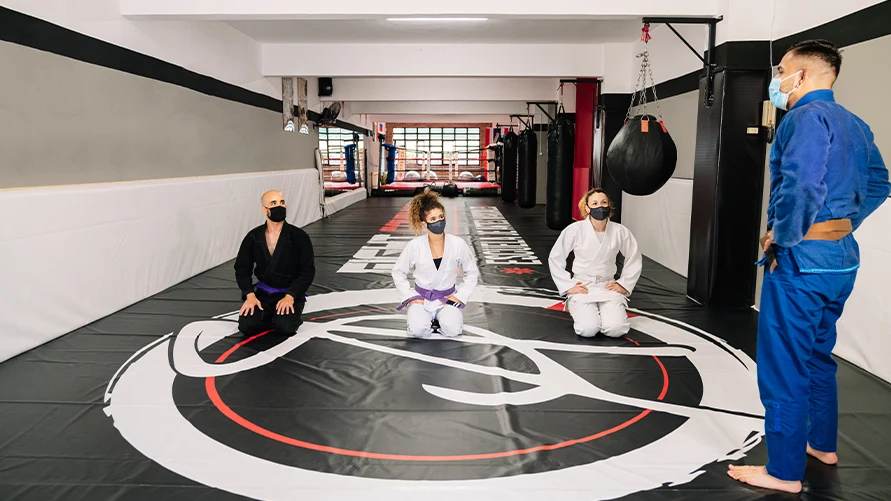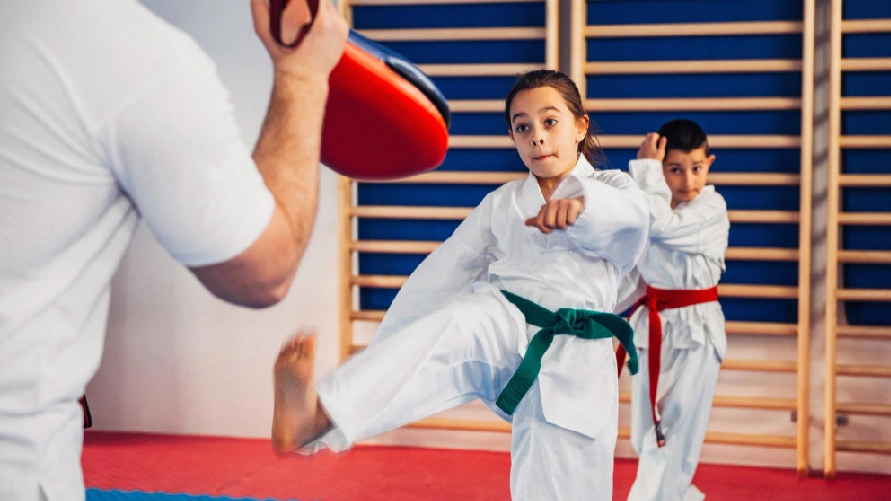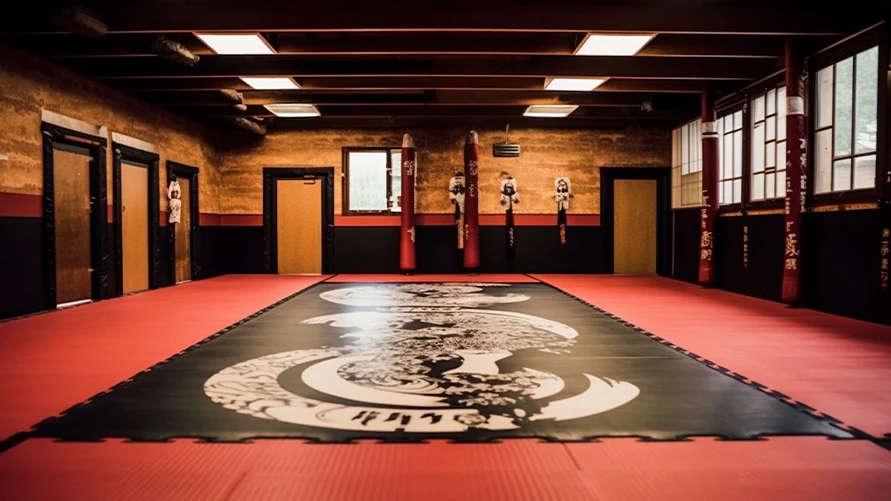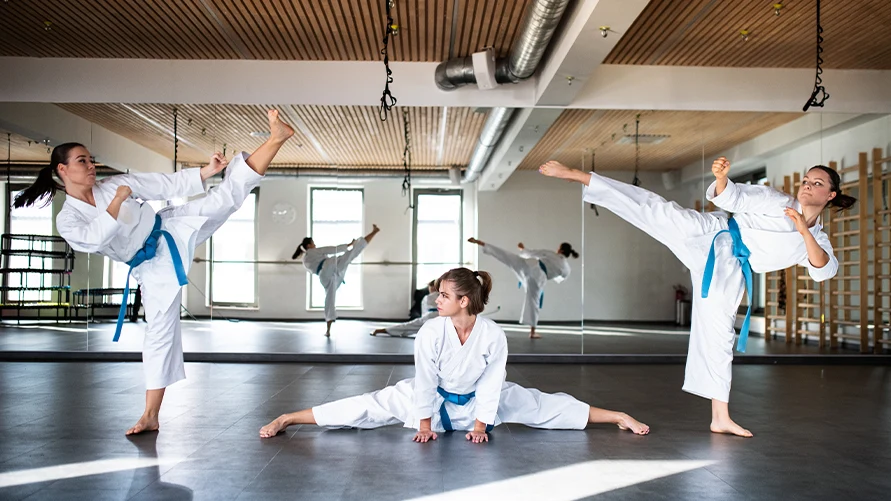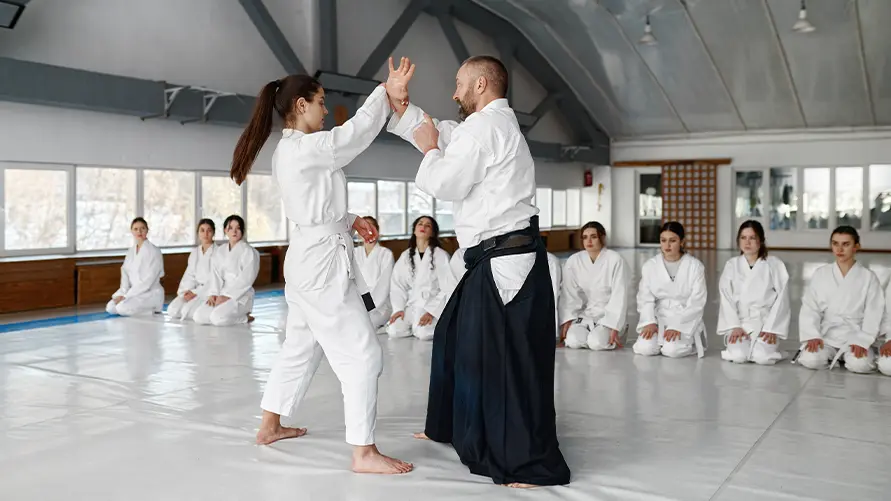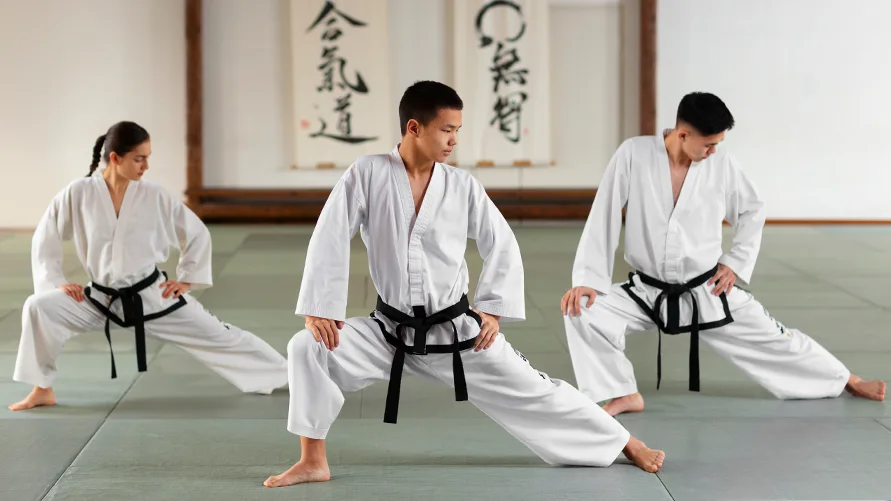Starting a martial arts studio is thrilling. But without the right data, it is like entering a ring blindfold. Whether you are a black belt or a business rookie, you need real stats to back your decisions.
You might hear from others that martial arts is booming and profitable. But blindly following trends doesn’t work. The martial arts industry is profitable, but also fiercely competitive.
So you need to understand the existing martial arts industry analysis and trends, to start stronger. This blog will help you know the martial arts industry statistics in detail and from multiple angles.
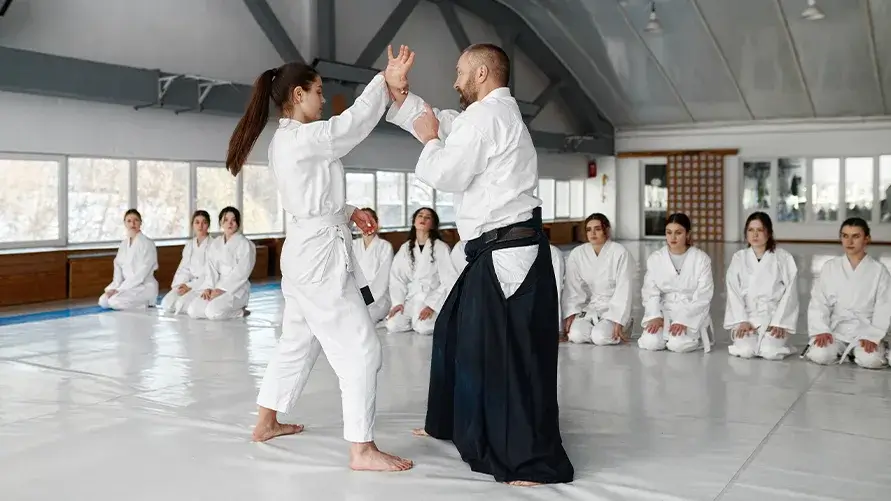
The martial arts industry is bigger than you think
Do you think this martial arts craze is just in the U.S.? No, it has grown to a new level, and it’s a worldwide mania.
From 2018 onwards, the global martial arts industry has been experiencing significant growth. In 2024, the U.S. martial arts market revenue reached an estimated $19.4 billion, with projections indicating continued expansion.
- Global martial arts industry statistics: The martial arts industry is projected to reach $170 billion by 2028. It reflects a robust compound growth annual rate (CAGR) of 7.9%.
- Total martial arts studios in the U.S: Over 50,000 studios operate nationwide, catering to a growing demand for self-defense, fitness, and youth development.
- Participants in the U.S: As of 2023, there were 6.6 million active martial arts participants in the U.S alone.
- Instructor earnings: The average martial arts instructor in the U.S. earns between $70,000 and $145,000 annually. However, it depends on experience, certifications, and the demand for the form.
This growth is driven by increasing interest in fitness, self-discipline, and cultural practices associated with martial arts. And this clearly shows the promising future of the martial arts business if you plan to start one.
Who is taking martial arts classes
Understanding the martial arts industry growth is not enough to get started strategically. You need to understand the demographics of martial arts participants to tailor your studio offerings.
Age Groups
Let’s start with segregating into age categories:
- 5-17 years old: 40% (parents value martial arts for children’s confidence and focus).
- 18-34 years old: 30% (young adults interested in fitness and MA).
- 35-54 years old: 20% (self-defense and stress relief).
- 55+ years old: 10% (staying active and learning new skills).
The mixed martial arts industry (MMA) is the fastest-growing segment, expected to grow at a CAGR of 5.4% from 2023-2031 due to UFC’s popularity.
Gender split
- 60% male, 40% female, with women’s participation growing rapidly, especially in disciplines like kickboxing and Brazilian Jiu-Jitsu.
Income levels
- According to Pew Research, households earning $50k-$100K are the most likely to enroll, suggesting that pricing strategies should consider this income bracket.
- Parents spend $100-$300/month per child on martial arts classes.
Pro tip: Offer family discounts, studios with family plans see 25% higher retention.
Global martial arts trends and patterns
The martial arts industry is experiencing several notable trends:
- Digital training: The rise of online classes and virtual training sessions has expanded access to martial arts instruction.
- Hybrid models: Combining in-person and online training offers flexibility and caters to a broader audience. As 35% of studios now offer virtual training.
- Inclusive programs: Studios are developing programs tailored for women, children, and older adults, promoting inclusivity.
- Wellness integration: Incorporating mindfulness and wellness practices into martial arts training appeals to health-conscious individuals.
- Global expansion: Martial arts are gaining popularity in emerging markets, leading to increased demand for qualified instructors and studios.
The U.S. martial arts market: Where’s the money?
The southern U.S, particularly Texas, Florida, and California, hosts the highest concentration of martial arts studios. However, underserved markets in smaller cities present opportunities with less competition.
Top revenue sources for studios:
- Class fees (70%) – Monthly memberships provide steady income.
- Private lessons (15%) – Personalized training commands higher rates.
- Merchandise & gear (10%) – Selling uniforms and equipment boosts profits.
- Competition & events (5%) – Hosting tournaments and events adds revenue.
Most popular martial arts forms worldwide
Understanding popular martial arts disciplines can guide your studio’s offerings:
- Mixed martial arts (MMA): 5% of gyms in the U.S focus on hybrid combat, combining techniques from various disciplines. Its popularity has surged due to organizations like the UFC.
- Karate: A good 14% of gyms focus on Karate. A Japanese martial art focusing on striking techniques. Widely practiced globally, especially among Children and young adults.
- Taekwondo: Originating from Korea, it emphasizes high kicks and fast movements. Recognized as an Olympic sport, it is practiced worldwide.
- Judo: A Japanese martial art centered on throws and grappling. Also an Olympic sport with a significant global following.
- Brazilian Jiu-Jitsu (BJJ): Only 20% of gyms in the U.S focus on ground fighting and submissions. Gaining popularity due to its effectiveness in self-defense and MMA.
- Muay Thai: Known as the “Art of Eight Limbs”, this Thai martial art uses punches, kicks, elbows, and knees. Popular among striking enthusiasts. Around 2% of gyms in the U.S offer training on this form of martial arts.
- Kung Fu: 4% of gyms train this Chinese martial art, encompassing various styles and techniques. Known for its fluid movements and philosophical aspects.
- Krav Maga: Only 2% of gyms in the U.S coach Krav Maga. Developed for the Israeli military, it focuses on real-world self-defense. Gaining traction among civilians seeking practical defense skills.
- Tai Chi: It is a Chinese martial art known for its meditative movements and health benefits, especially popular among older adults.
- Capoeira: It is a Brazilian martial art that combines dance, acrobatics, and music, known for its dynamic and expressive movements.
| Martial Art | % of U.S. Gyms | Key Audience |
| MMA | 5% | Adults (18-34) |
| Karate | 14% | Kids (5-17) |
| BJJ | 20% | Adults (25-44) |
| Taekwondo | 12% | Kids & teens |
| Muay Thai | 2% | Fitness enthusiasts |
Pro Tip: Offering multiple disciplines can double your addressable market.
Equipment costs: What you’ll need (and what sells)
Starting a studio requires investment in essential equipment. You will need to cover the cost of essential gear in your business financial plan. However, if you plan to expand your revenue streams along with martial arts classes, setting up an online retail store is a lucrative option.
Essential gear
- Quality mats ($1,000–$5,000) are crucial for safety.
- Punching bags ($100–$500 each) include heavy and speed bags.
- Uniforms ($20–$50 each) for various martial arts disciplines.
- Protective gear ($200–$1,000) like gloves, headgear, and shin guards.
Things for a retail store
Here is what students buy most:
- Gloves (40% of gear sales) – essential for many martial arts.
- Belts (20%) – representing progression and achievement.
- Rash guards & apparel (30%) – Branded merchandise is popular.
Software solutions: Running your studio smoothly
Modern studios benefit from software solutions to streamline operations. And instead of relying on manual or outdated options, martial arts studio software consolidates everything into one place. It means you handle and automate entire studio operations like:
- Automate billing (reduces late payments by 50%).
- Track attendance (studios using software see 30% higher retention).
- Sell merch online (25% of revenue now comes from digital sales).
The right martial arts studio management software helps you beyond just smooth management. It offers you benefits in unthinkable ways, like peace of mind, safe revenue growth, and more time to focus on teaching kicks and moves.
Industry insights
- Studios utilizing management software experience 30% higher retention rates.
- Automated billing systems reduce late payments by 50%.
Marketing your studio: What actually works
Effective marketing strategies are essential for attracting and retaining students:
Where students find studios:
- Word of mouth (40%) – Satisfied students refer others.
- Social media and Meta Ads (30%) – Platforms like Instagram and TikTok engage younger audiences.
- Google search (20%) – SEO helps parents and adults find local studios.
- Local ads (10%) – Flyers and community boards remain effective.
Best social media platforms to market:
- Instagram & TikTok – Short videos showcasing training sessions get 3x more engagement.
- Facebook – Engage parents and older demographics.
- YouTube – Tutorial and demonstration attract a broad audience.
Pro tip: A “Free First Class” offer boosts sign-ups by 40%.
The path forward
The martial arts industry is not just growing; it is evolving. With global revenue projected to hit 170 billion by 2028, the U.S market is already surpassing 19 billion. It shows that there has never been a better time to open a studio. From kids learning discipline to adults seeking fitness and self-defense, demand spans every age group, with women’s participation rising faster than ever.
And the key to success lies in understanding martial arts industry trends and statistics: hybrid training models, inclusivity, and smart studio management. Whether you focus on MMA’s explosive growth, BJJ’s rising popularity, or traditional disciplines such as Karate and taekwondo, the opportunity is vast. Pair that with the right software, strategic marketing, and a focus on retention, and your dojo will thrive. But remember, great studios balance business savvy with authentic teaching. So, the opportunity is real. The time is now.
With the right mix of passion and planning, your dojo can thrive. Make the right move with the best martial arts studio management software.
